Best mountain bike brakes – our testers rate the most reliable MTB stoppers around
No matter your riding style and budget, our experts have picked out the best mountain bike brakes available
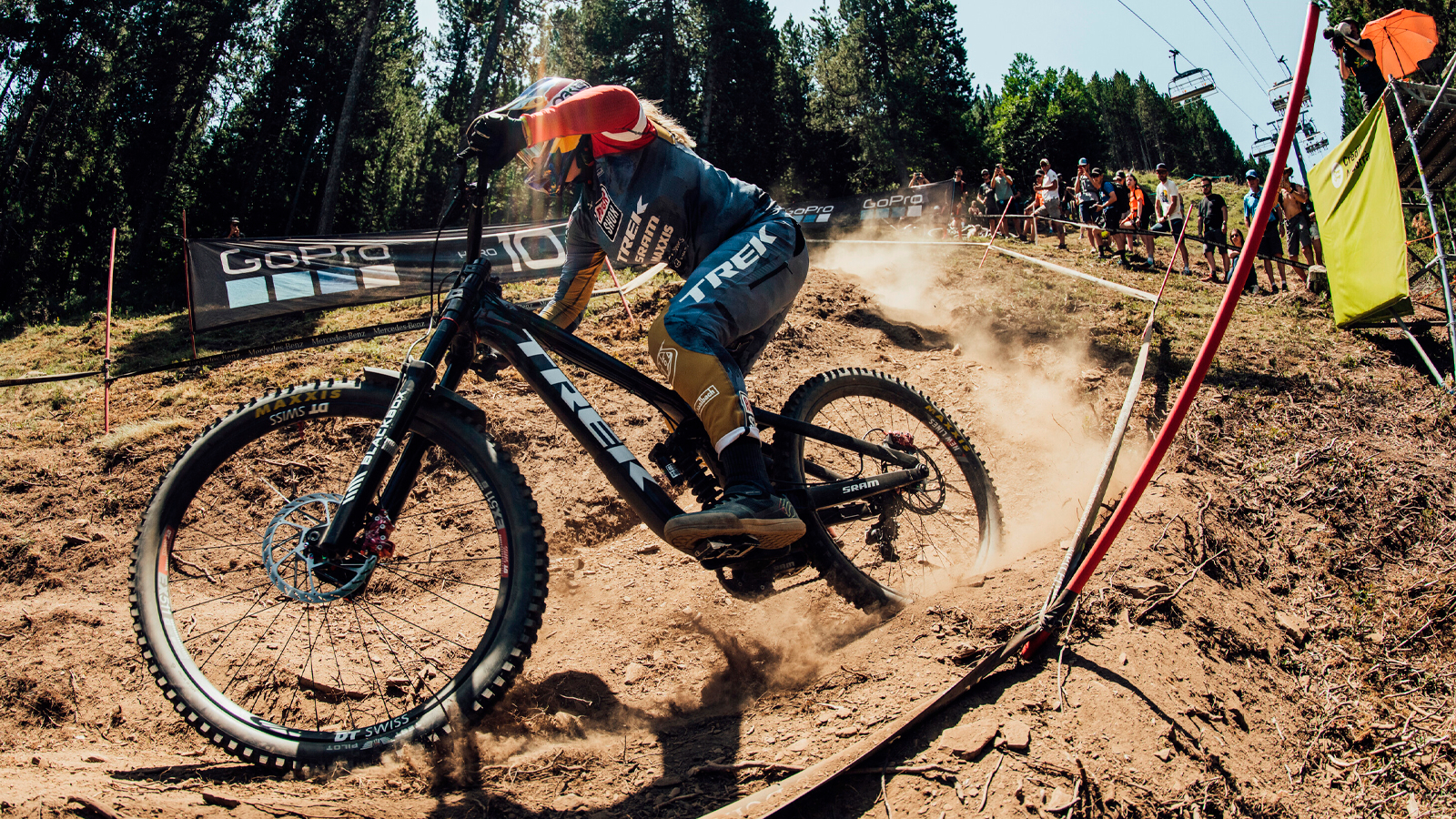
Brakes are arguably the most important control component on your bike, so you'll want to fit the best mountain bike brakes you can. After all, the last thing you want to do is drop into a trail and find out you can't stop.
There's more to MTB brakes than pulling a lever to stop – different brakes have different feel and power and there are also a wide range of features, weights, and costs to juggle when hunting down the best mountain bike brakes for your bike.
Most brakes feature either two or four pistons. Two pistons calipers are generally lighter and have more bite but can't match the power and modulation of a four-piston brake. Different levers also play a big part in a brake feel; lever blade shape, bite point, reach, and adjustability should all be considered to get the perfect lever feel for pin-point precision braking.
If you're not sure what to look for, skip ahead to read our guide on how to choose the best mountain bike brakes at the bottom of this article.
To get the optimal performance from the best mountain bike brakes you need to pair them with good-quality rotors and pads. If you're looking to upgrade or replace them, check out our guides to the best mountain bike disc brake rotors and MTB disc brake pads.
The quick list
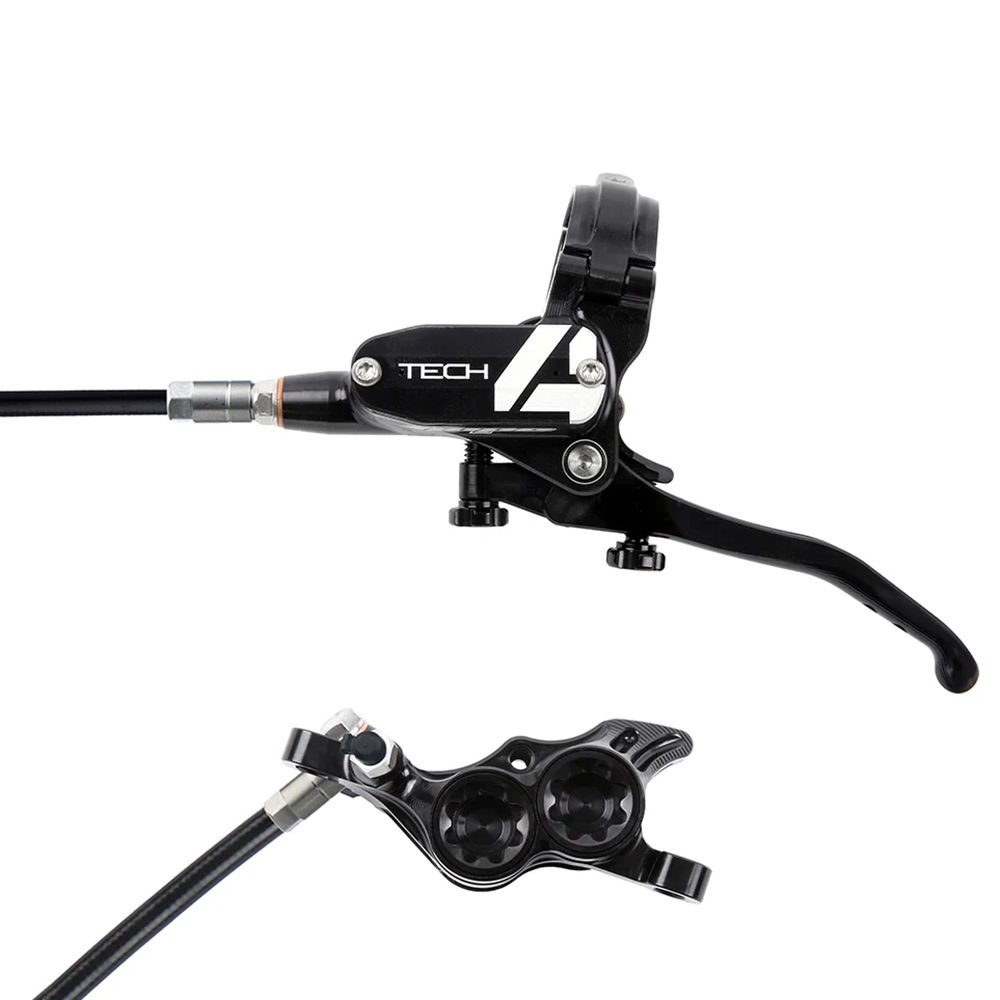
Best MTB brakes overall
Superbly powerful and incredibly precise brakes, with a silky-smooth feel.
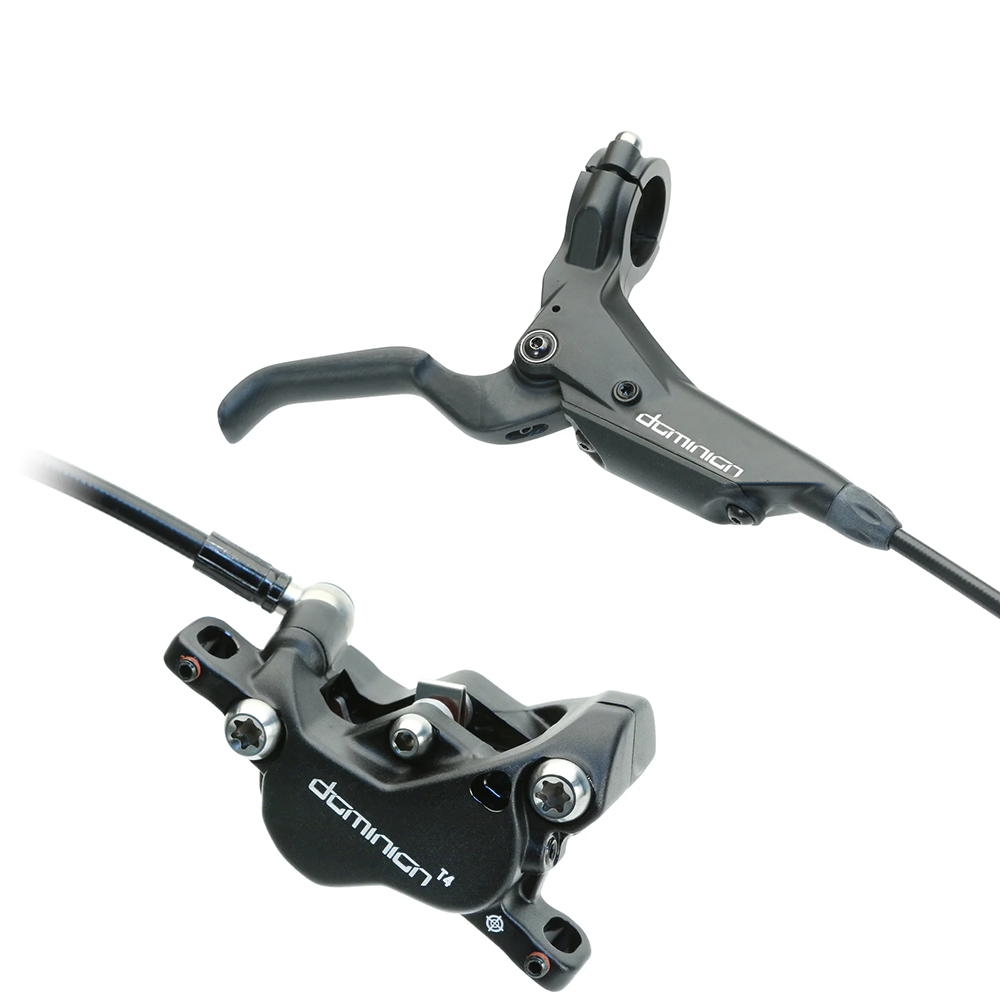
Best MTB brakes for modulation
The super-light lever feel aids modulation and reduces arm pump.
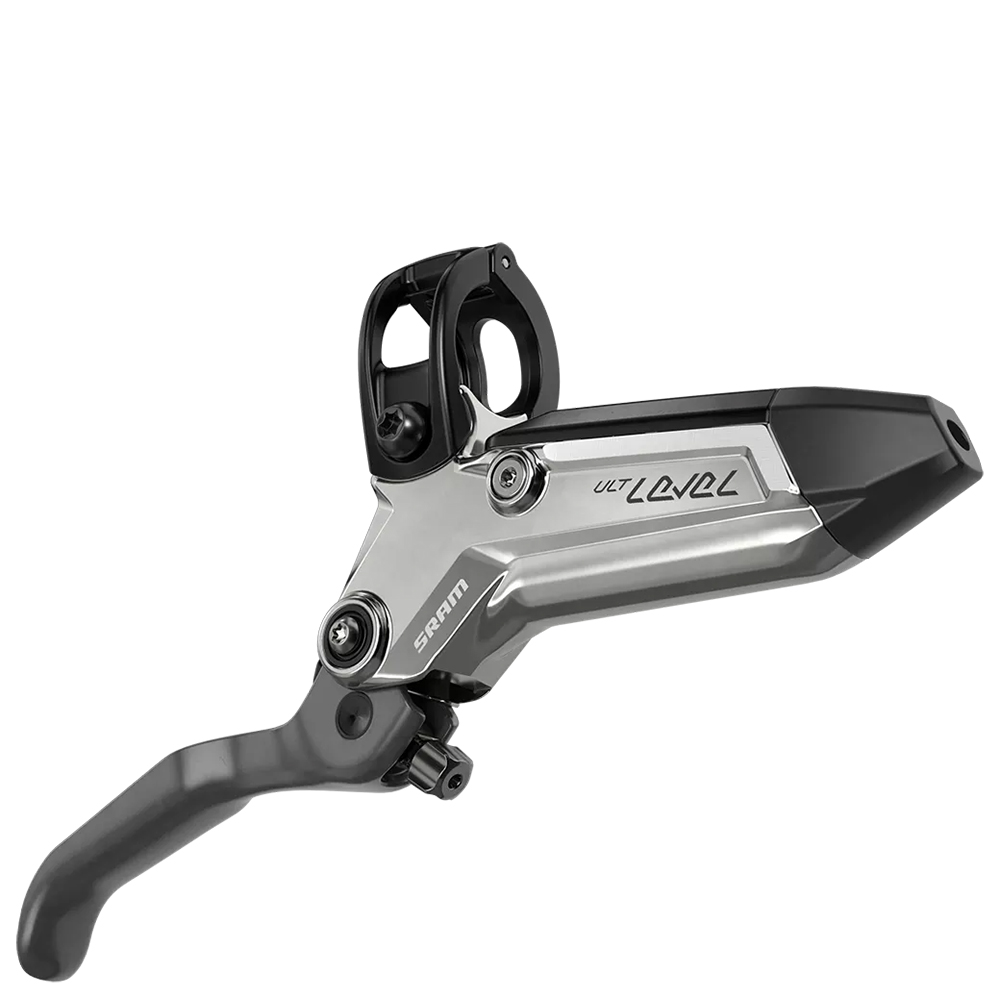
Best MTB brakes for cross-country riding
They deliver an excellent braking control to weight ratio with easy fitting/servicing.
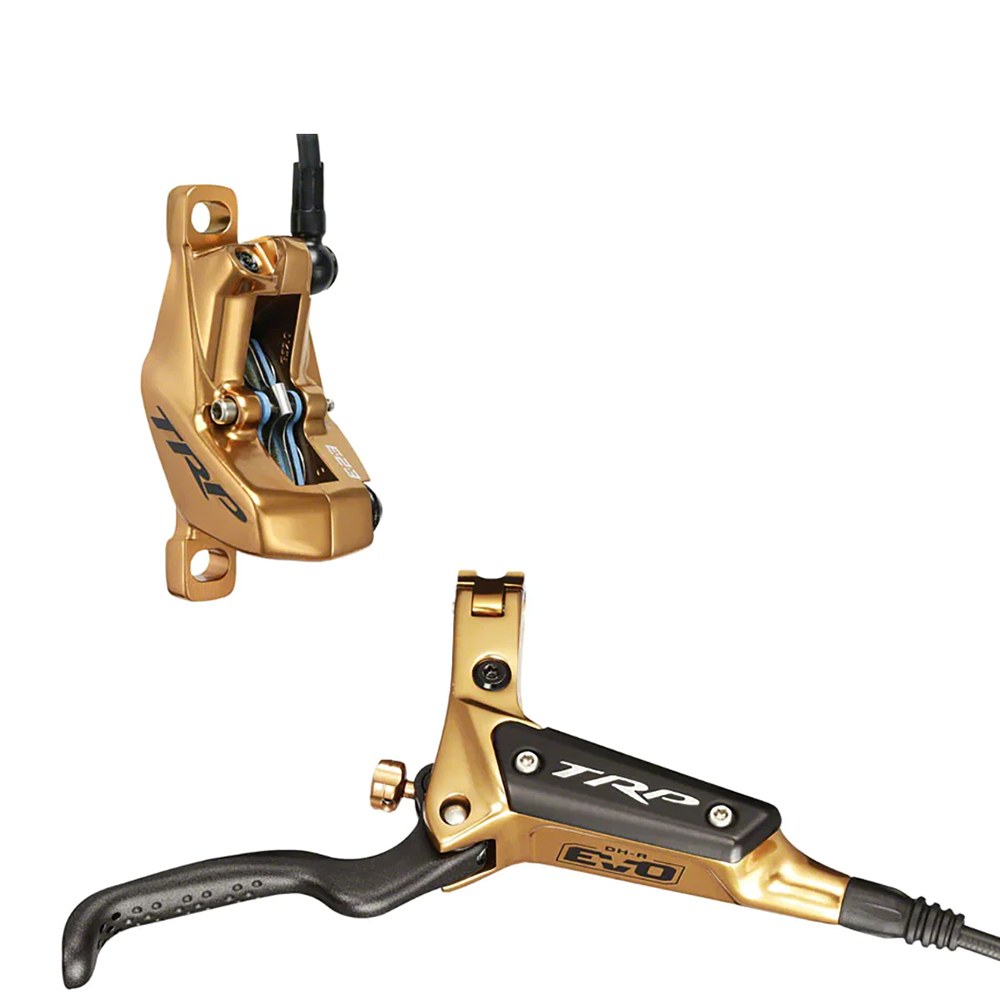
Best MTB brakes for downhill
Bringing serious power and great modulation into a superbly reliable package.
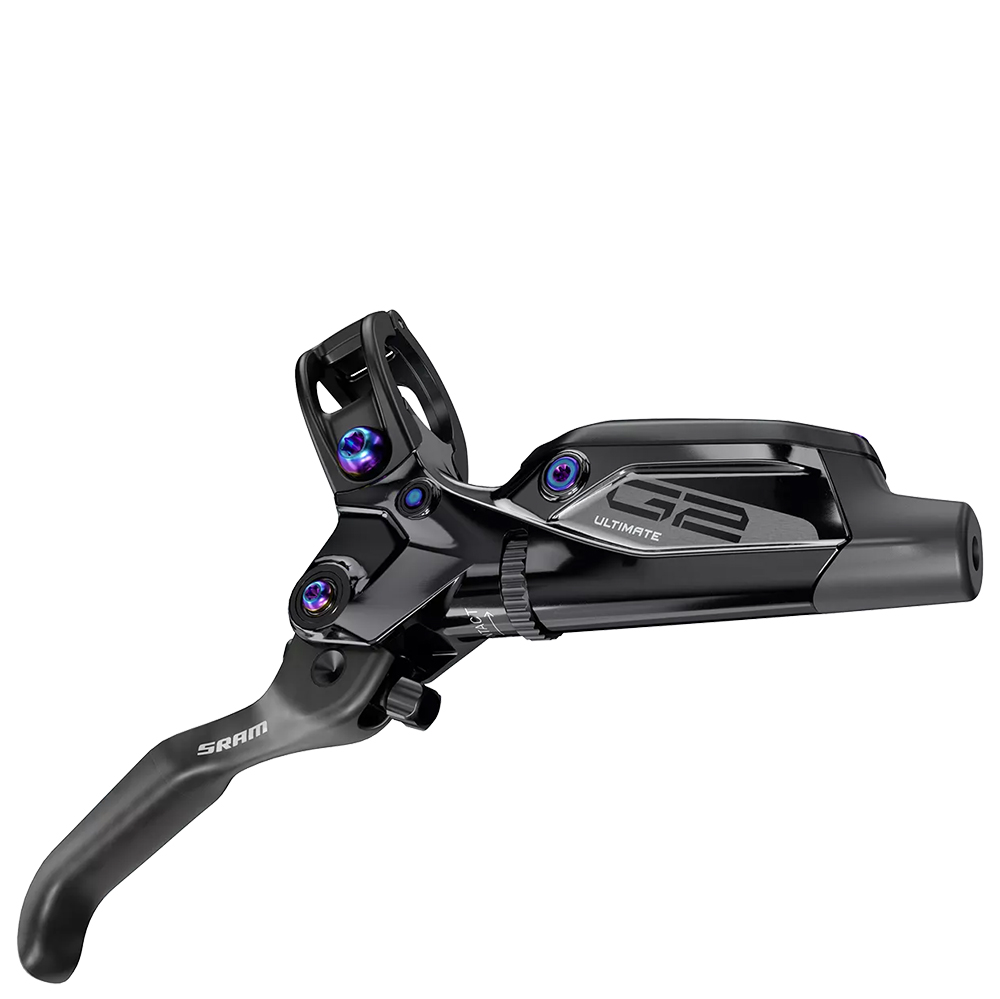
Best MTB brakes for trail bikes
Excellent, user-friendly trail brake with precise and predictable control.
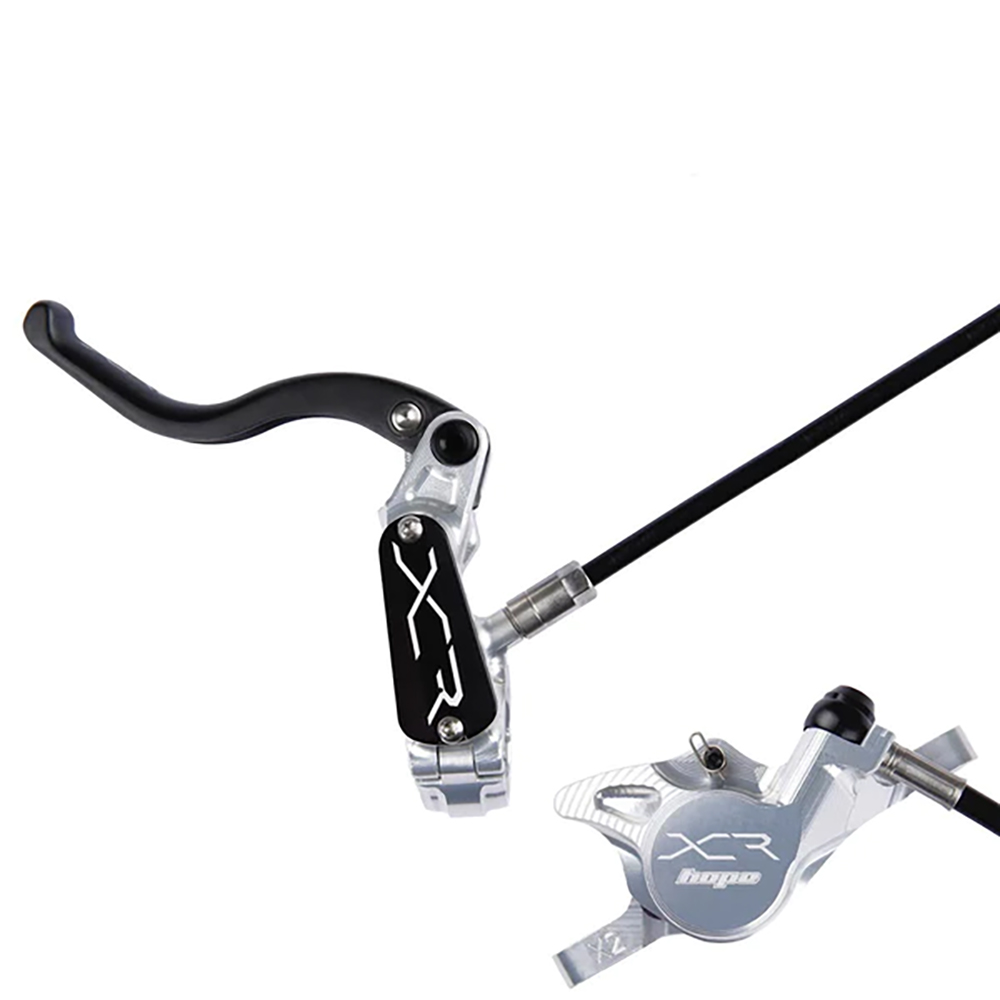
Best lightweight MTB brakes
Beautifully UK-made, competitively light and powerful cross-country brake.
See the next 4 brakes ↓
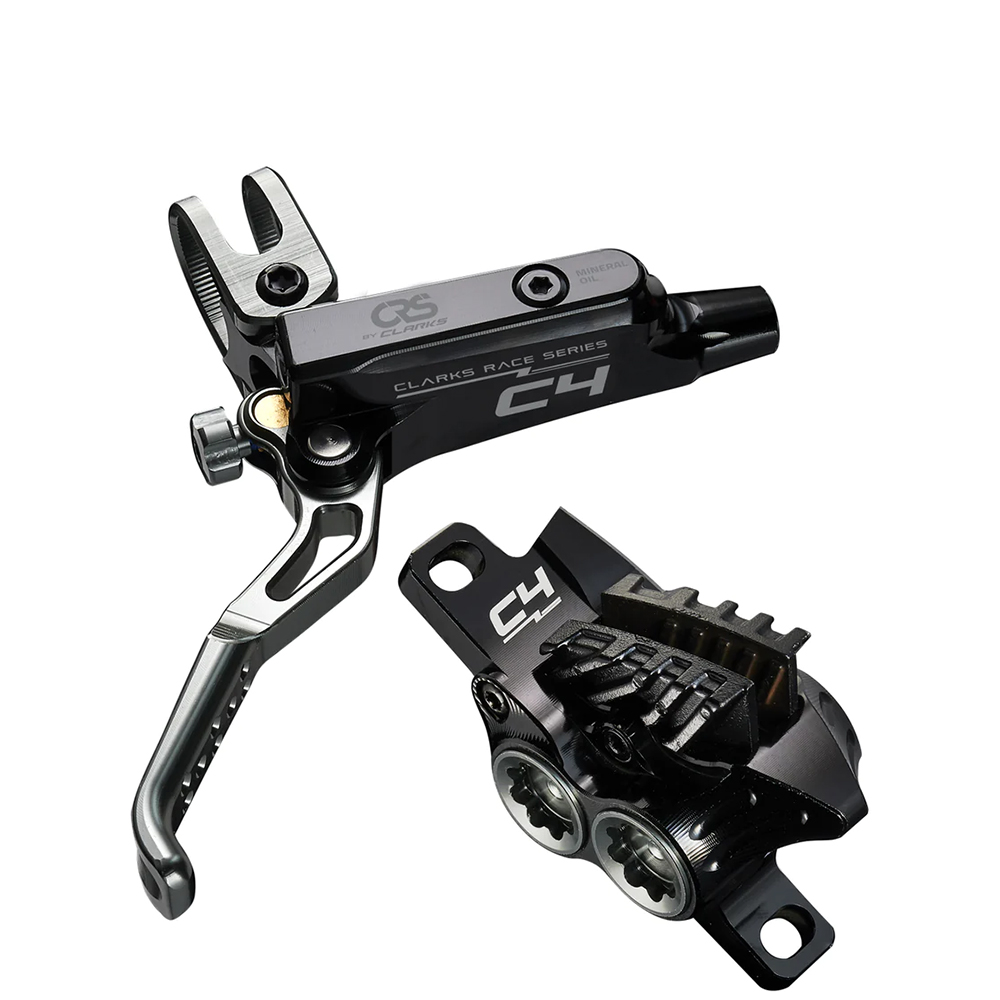
Best value upgrade MTB brakes
With decent power, a smooth lever feel and low weight, they easily outperform their price tag.
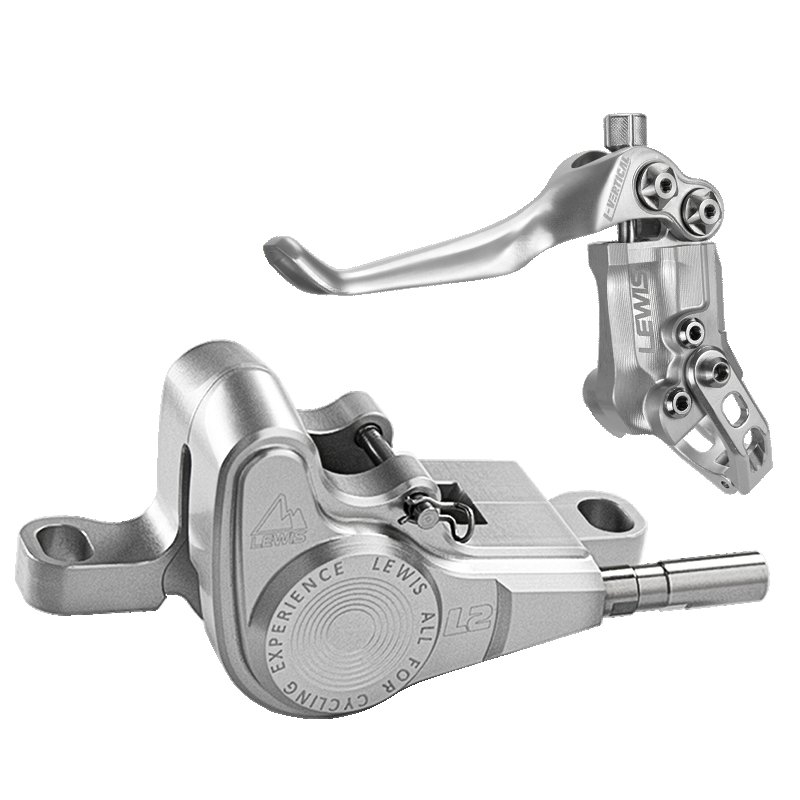
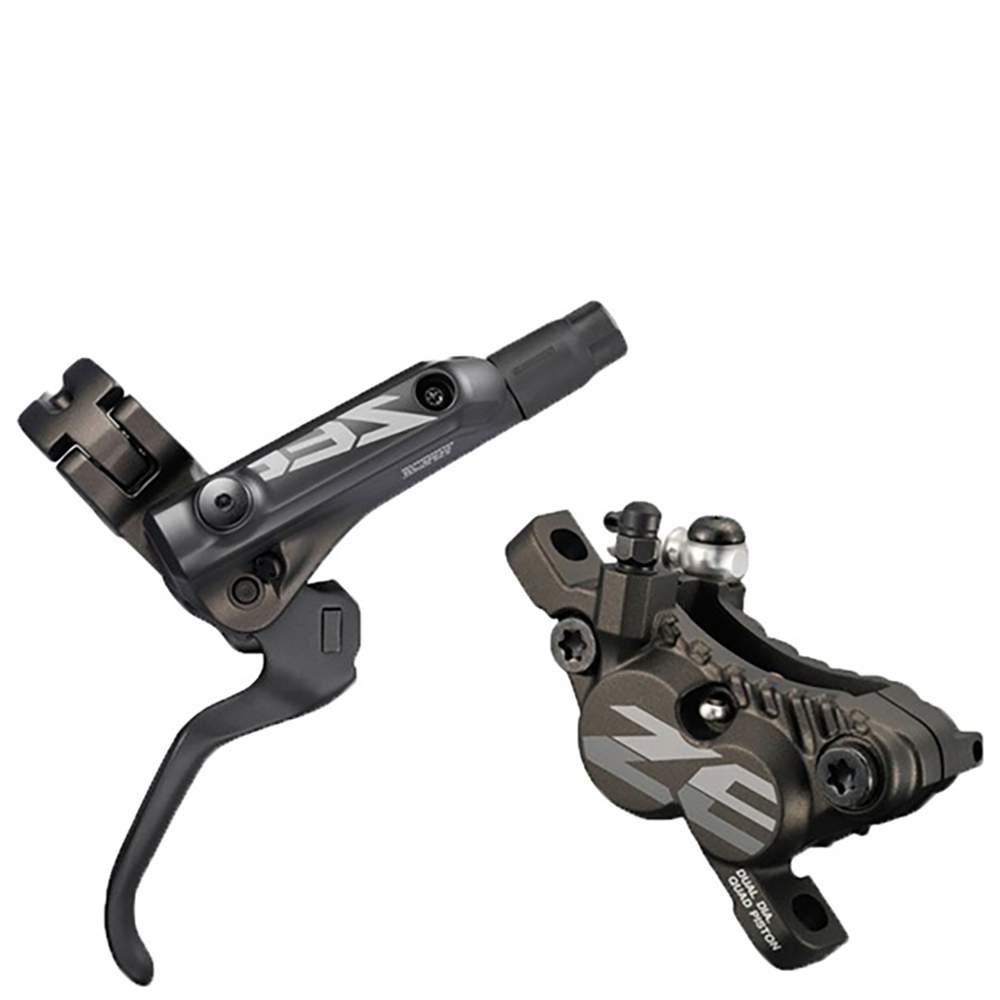
Best MTB brakes for reliability
Massive power delivered with utterly reliable repetition in all conditions.
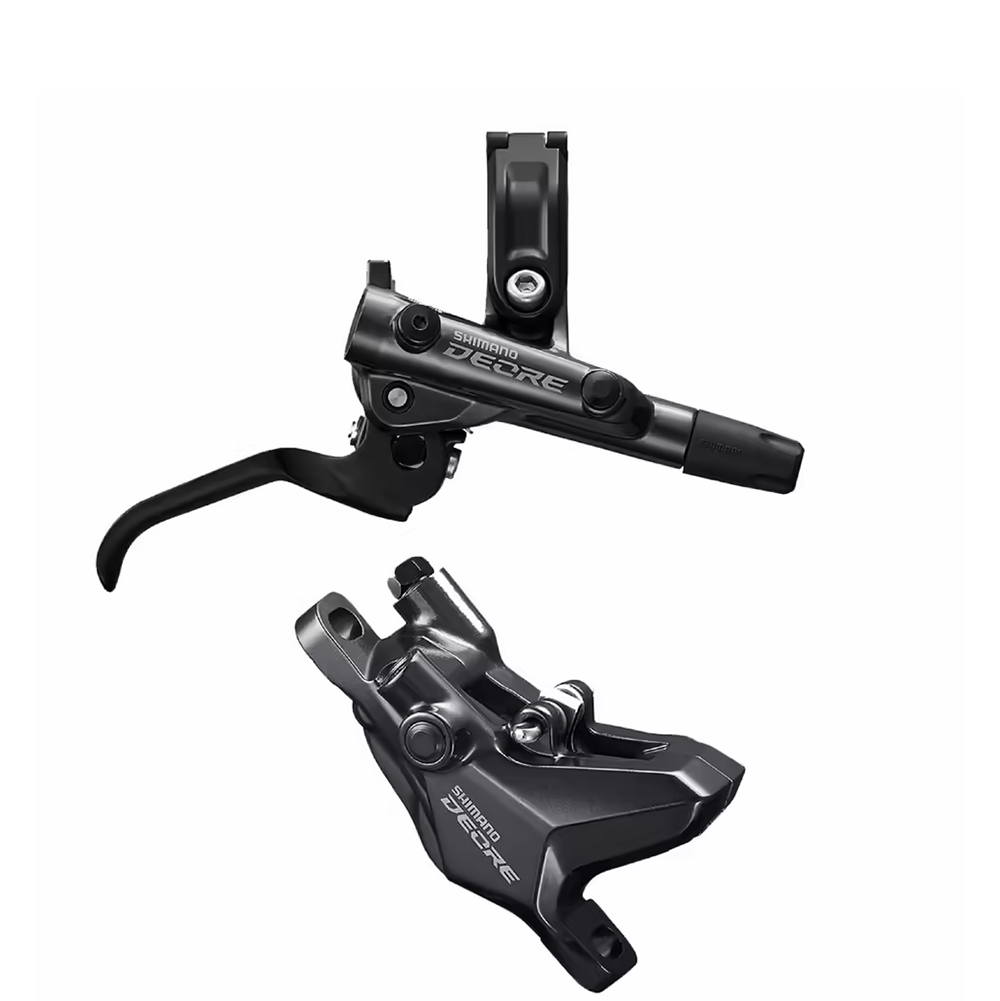
Best budget MTB brakes
Impressive feel and control, and reliable performance, for a great price.
Best mountain bike brakes
Why trust BikePerfect
1. Best overall
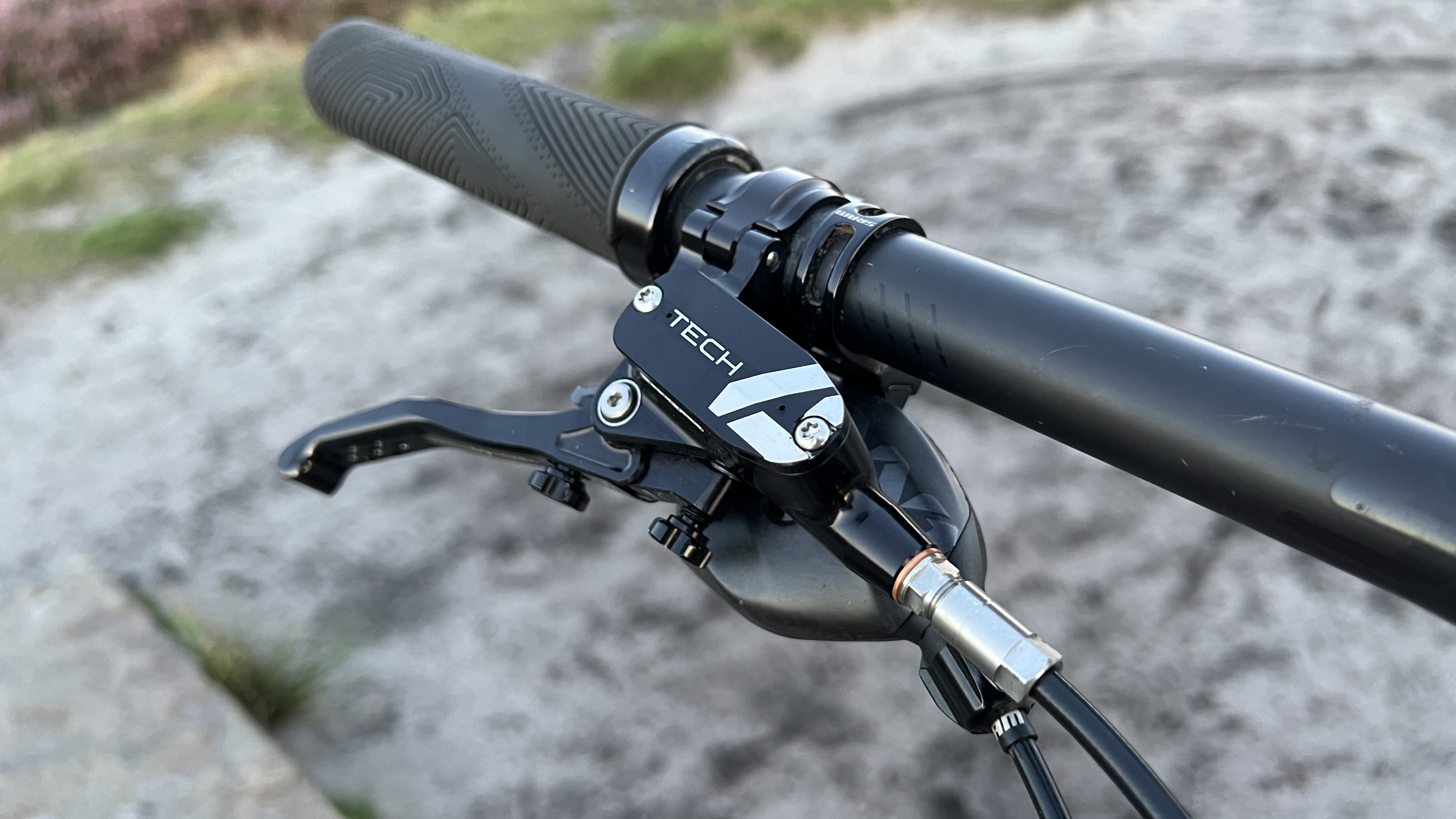
Specifications
Reasons to buy
Reasons to avoid
We rarely give a product the full five out of five stars, but Hope's latest enduro brake is fully deserving of such a score. The British manufacturer has been making brakes for almost as long as proper mountain bikes have been widely available and this latest model builds on a long line of superb stoppers to be the best brake they've ever made.
As you'd expect, the Tech 4 E4s are superbly powerful, but they are also silky smooth and incredibly precise. Power fade over long runs is imperceptible and they are as easy to set up and maintain as it gets. Like all Hope products, the Tech 4 brakes come in a range of anodized colors, they're covered by Hope's renowned after-sales service should you have any issues, and even come with a spare set of pads.
Guy Kesteven reviewed the Hope Tech 4 E4 and had this to say: "When it comes to translating your speed reduction thoughts to the trail, the Hope Tech 4 E4 is one of the best mountain bike brakes around in terms of easy and meaningful adjustment of featherlight feel, progressive modulation and clean consistency."
For more info, check out our full Hope Tech 4 E4 brake review.
2. Best for modulation

Specifications
Reasons to buy
Reasons to avoid
Hayes absolutely dominated the disc brake market at one time but lost that lead in a big way. That means they invested serious R&D time in their Dominion comeback brake and it’s been worth it. Hayes then gave the A4 a serious overhaul, shaving 100g off the brakeset to create the T4.
To do this Hayes fitted the brake with titanium hardware, a Reynolds-made carbon lever, a composite reservoir cover, and a good going over to remove any excess material.
You still get all the same adjustment features including ‘Crosshair’ caliper adjustment which makes setup easy. Reach and bite points are tuneable, although they are now both adjusted using a 2mm hex key. The lever blade uses cartridge bearings for a really smooth feel.
The lever pull is extremely light giving the Dominion T4s impressive modulation ability. The power is delivered in a very linear and consistent manner rather than being snatchy, so they really impress in the steepest, slipperiest conditions when a locked wheel spells disaster. We haven't experienced any fade from heat build-up on longer descents either and the feathery lever feel helps keep arm pump at bay.
Graham Cottingham proclaimed in his review that the, "Hayes Dominion T4s are some of the best brakes I have used, the sensitive, light action levers flattering braking ability allows you to apply ample amounts of power perfectly. Not only does the light pull of the lever help braking accuracy it can also contribute to reducing arm pump on long rough descents so you can keep riding hard."
Check out our full Hayes Dominion T4 review to find out why it's our go-to for braking precision.
3. Best for cross-country
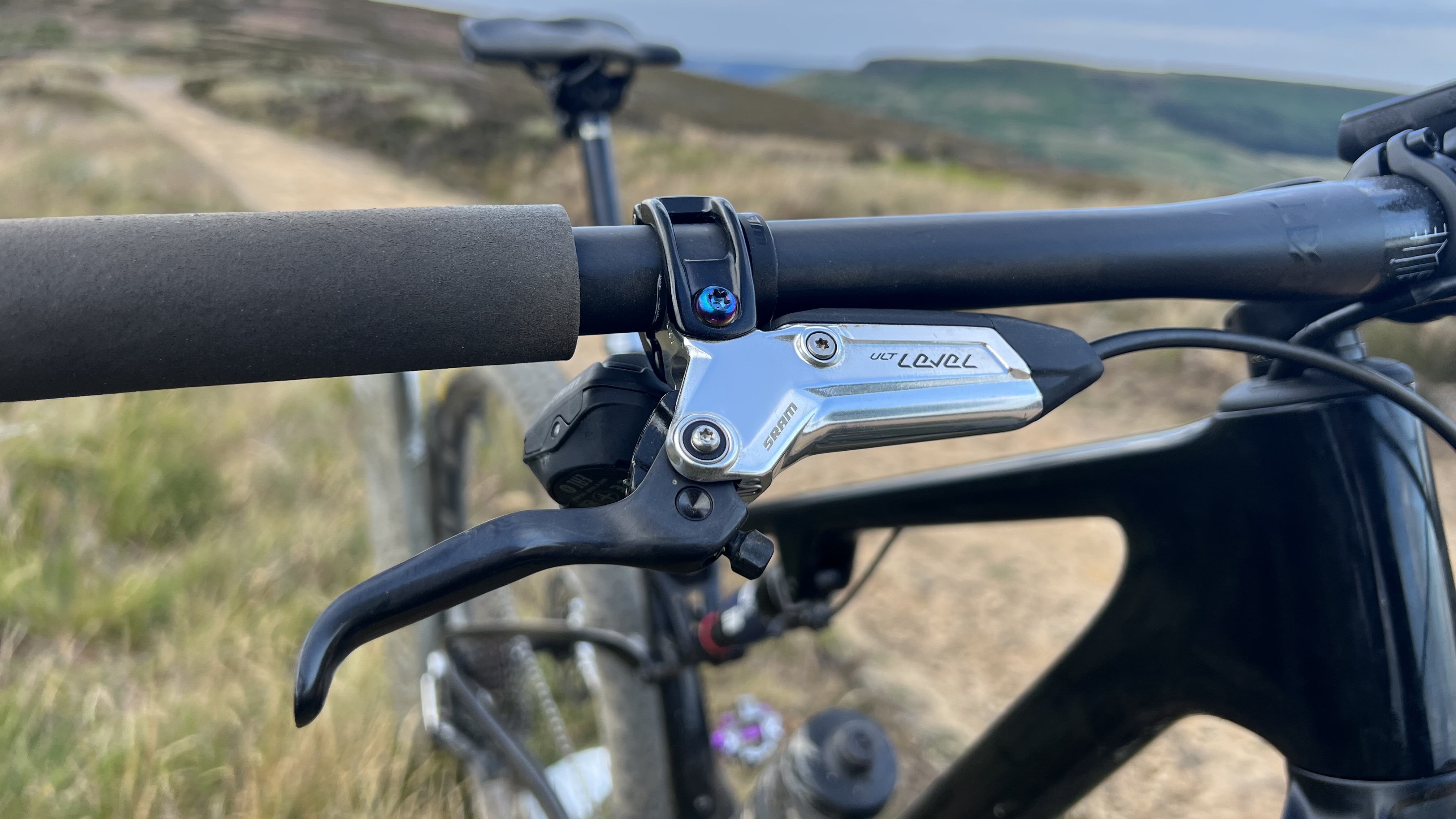
Specifications
Reasons to buy
Reasons to avoid
SRAM’s already impressive Level family has recently been through a hardcore "Stealth" makeover to make it even lighter, sleeker, and actually boost control and power.
The big upgrade is the new Level Ultimate Stealth lever which sits the levers reservoir closer to the handlebar. The hoses also sit closer to the bar which will work better with the increasing trend for internal headset setups. Unlike the Code variation you don't get a bite point adjustment to save weight although the carbon lever blades are reach adjustable via a dial.
Not only are the Level Ultimate Stealth four-pots lighter than their direct Shimano XTR four-pot competitor, they are also lighter than the two-pot version, making it a weight and power win-win scenario.
Guy Kesteven put the Level Ultimate Stealth four-pots to the test and concluded that, "with reasonable, really well-modulated power with awesome lever feel and easy installation and servicing, the Level Ultimate Stealth 4-Piston is a great trail brake to use. The fact it’s comparable in weight to many ‘XC’ brakes is an added bonus to anyone counting grams too."
To find out more, check out the full SRAM Level Ultimate Stealth 4-Piston brake review.
4. Best for downhill
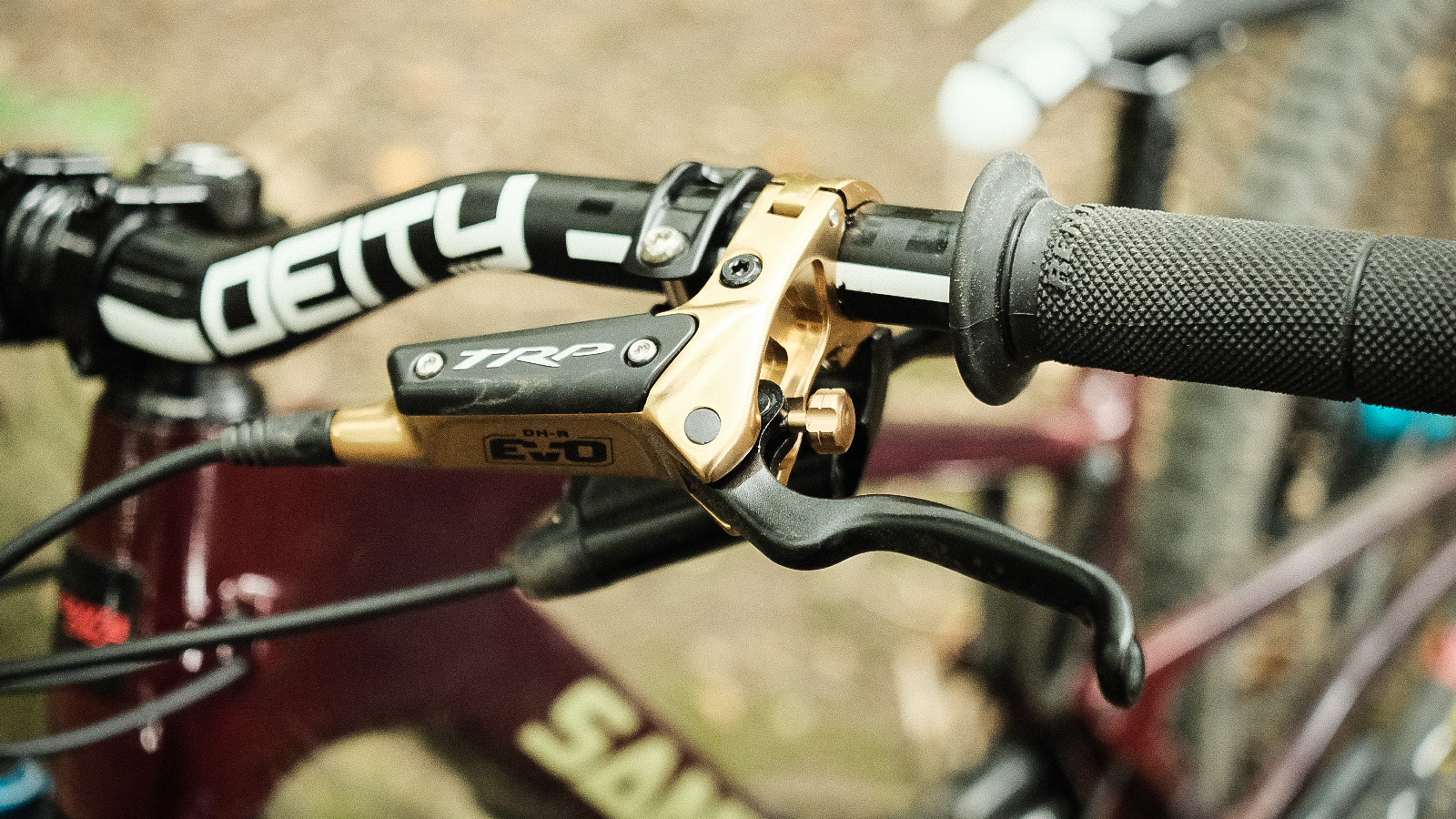
Specifications
Reasons to buy
Reasons to avoid
TRP's DH-R Evo was developed specifically for World Cup downhill racing, but is also well suited to long travel Enduro rigs and e-MTBs. The result is a super powerful brake that can deliver consistent power over the course of a full downhill track.
The lever features a 9mm piston for increased hydraulic leverage ratio to enhance the power on tap. The lever is dimpled to add finger grip and there is tool-less reach adjustment, although you don't get any contact adjustment. The caliper uses a two piece design which houses four equally sized hybrid pistons and has a set of Organic pads fitted. The pads are also Shimano compatible so finding spares shouldn't be an issue.
Jim Bland put the TRP DH-R Evos to the test, subjecting them to months of countless lift assisted runs in the Alps. In his review he came to the following conclusion: "There’s no shortage of high-power four-piston brakes on the market currently, but the power, consistency and reliability of the DH-R Evos puts them right up there with the best."
To read more, head over to our full TRP DH-R Evo brake review.
5. Best for trail
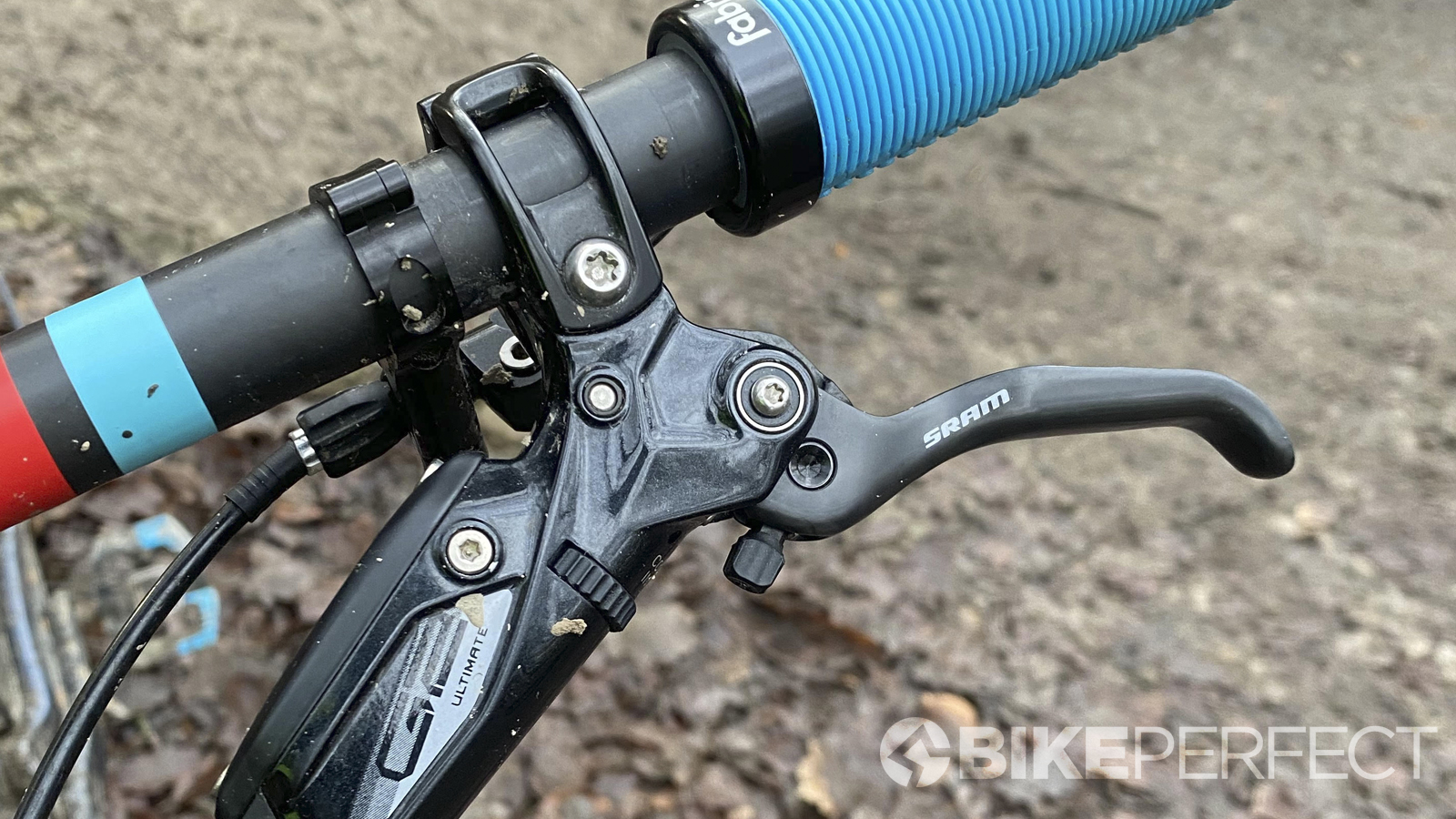
Specifications
Reasons to buy
Reasons to avoid
The G2 Ultimates also get the same upgraded levers as the Code RSC brakes assuring less slop and rattle. The Ultimates still get cartridge-bearing pivots and carbon blades for a silky feel and warm winter fingers. Either way, the bite point adjuster dial feels crisper and clickier on G2 and the return feels faster and lighter thanks to improved piston seals at the caliper end. The caliper is all-new too. It’s still two pieces bolted together but it’s stiffer for a boost-in bite and the existing resin and sintered pad options have been joined by a new resin ‘Power’ pad.
Together SRAM says this adds up to a seven percent power increase to keep it in line with ever-faster trail bike speeds. The most noticeable difference though is a crisper, better communicated feel all around, keeping heart rate reasonable even in the sketchiest, slipperiest, turn-in or wipe-out moments. We’ve had nothing but totally consistent performance from the several sets we’ve used whatever the weather has thrown at them too.
For more info, see our full SRAM G2 Ultimate brake review.
6. Best lightweight
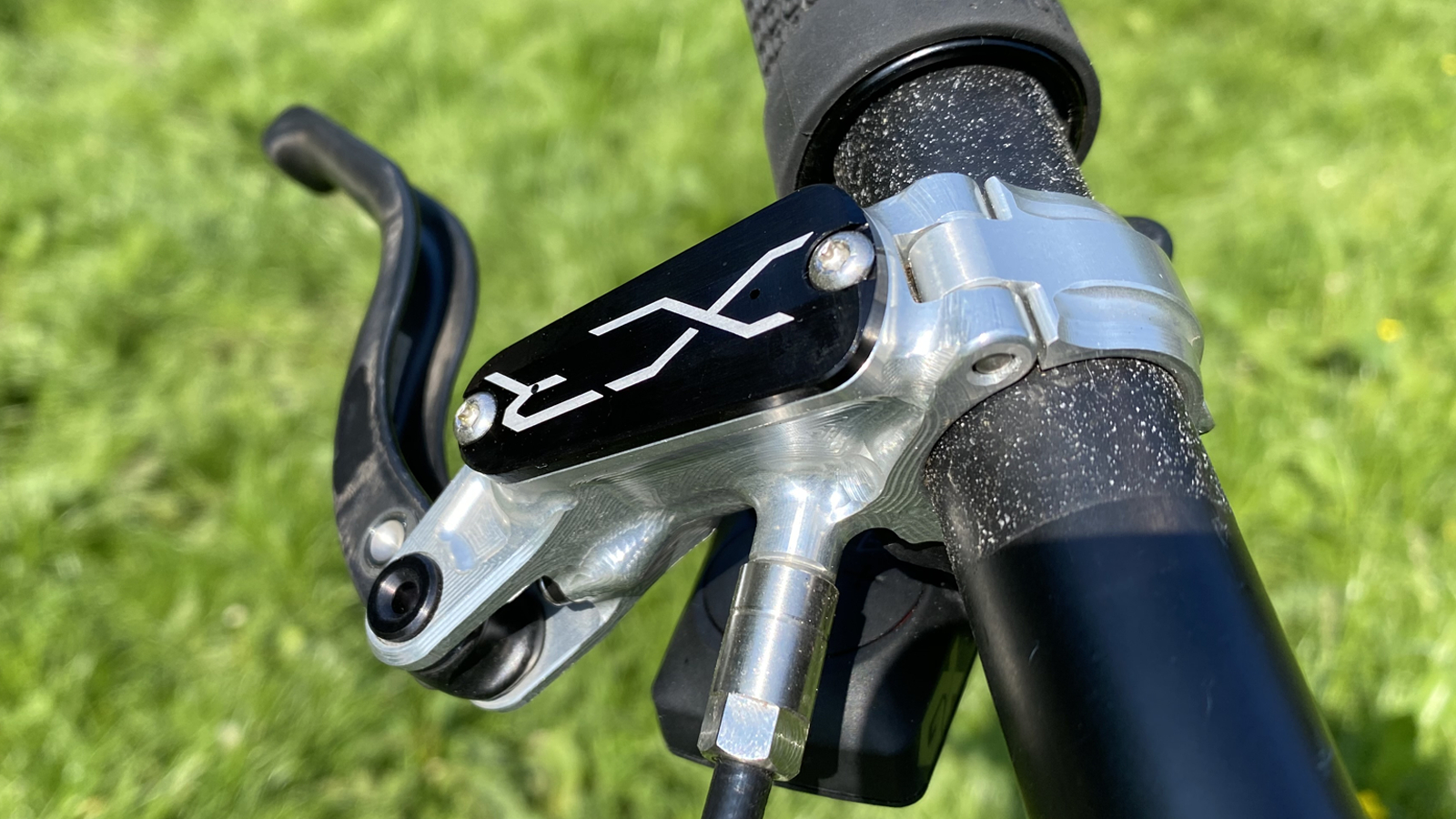
Specifications
Reasons to buy
Reasons to avoid
Hope meticulously machines and laser etches every metal part of its brakes (including rotors) into polished (or six different anodized colors) glory in Lancashire, England for a totally unique look that’s loved by an ultra-loyal fan base.
The all-new radial lever drives the master cylinder back towards the bars rather than parallel like other Hope brakes in order to keep the lever body as minimal as possible. The levers are linked to a modded version of its twin pot X2 trail caliper and you get titanium mounting hardware.
The slimmed down XCR manages to undercut the weights of both Shimano and SRAM's top XC brakes too. It's not just light either, the XCR lever and X2 caliper pairing ups the power over Hope's previous Race X2 Evo setup and has plenty of modulation and control to help stop the tires from locking up.
In his review, Guy Kesteven said, "it’s great to see some fresh brakes from Hope and the new XCR levers give a more subtle finger feel and a neater look on the bars as well as significantly lower weight."
For more details, head over to read our Hope XCR brake review.
7. Best value upgrade
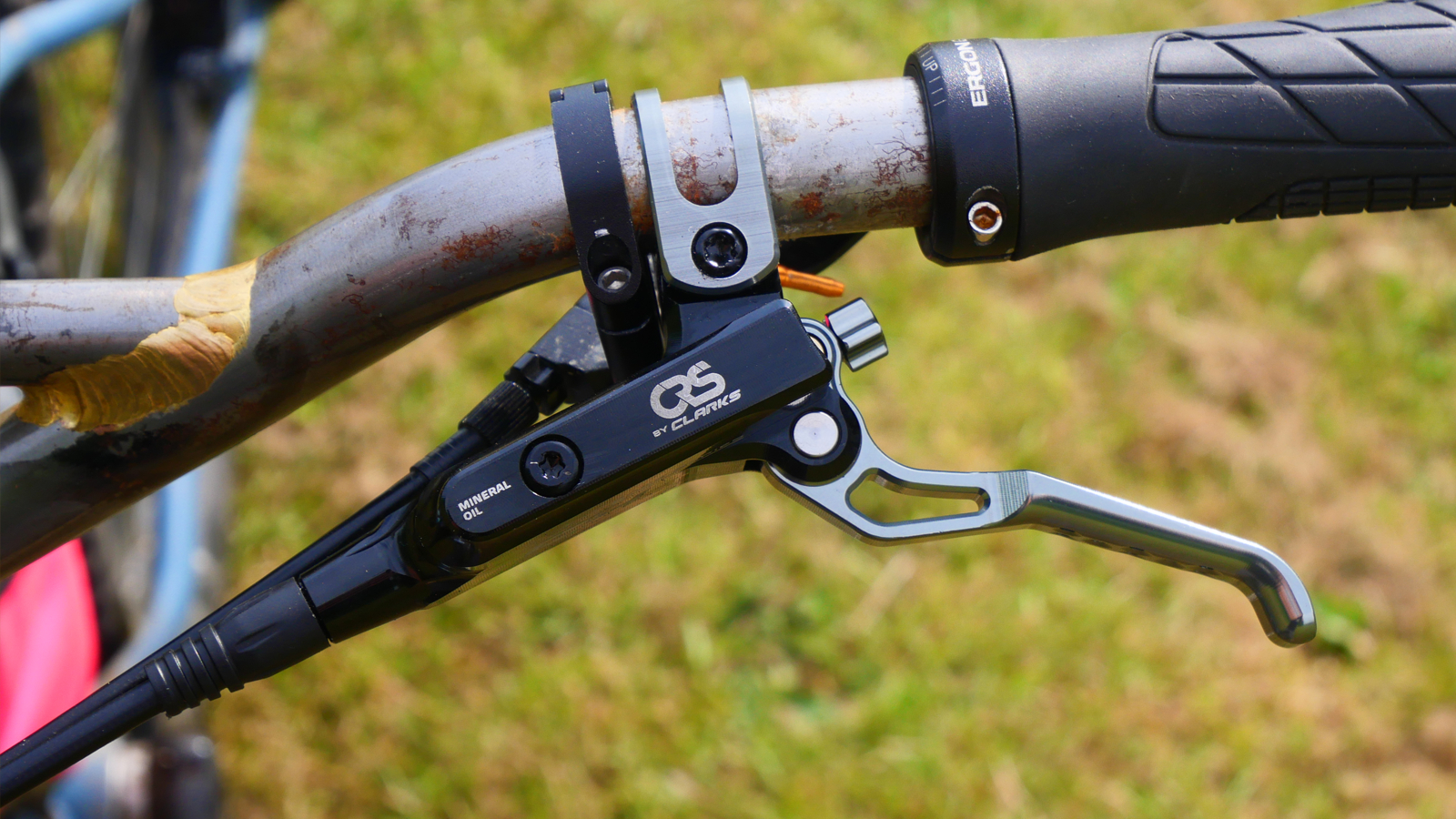
Specifications
Reasons to buy
Reasons to avoid
Clarks is a prominent brand in the budget brake market and is commonly seen as the hydraulic brake of choice for budget mountain bikes. Recently the brand released a race-orientated brake that is capable of matching the performance of many considerably more expensive brakes.
The levers and calipers are all nicely CNC machined and feel smooth and stiff in use. The lever feel is similar to SRAM with a progressive action and clear bit point. Power delivery is strong and consistent with a decent amount of modulation should you need to scrub a little speed. On long technical trails, there were no issues with heat build-up and fade either.
At £200 the price point is staggeringly good as it not only includes both brakes but also floating rotors too. The biggest complaint is that they come with a 160mm rotor for the rear rather than 180mm front and rear, but even with a smaller rotor there was still enough power for all but the steepest and fastest trails.
For more info check out our full Clarks CRS C4 review.
8. Best for power
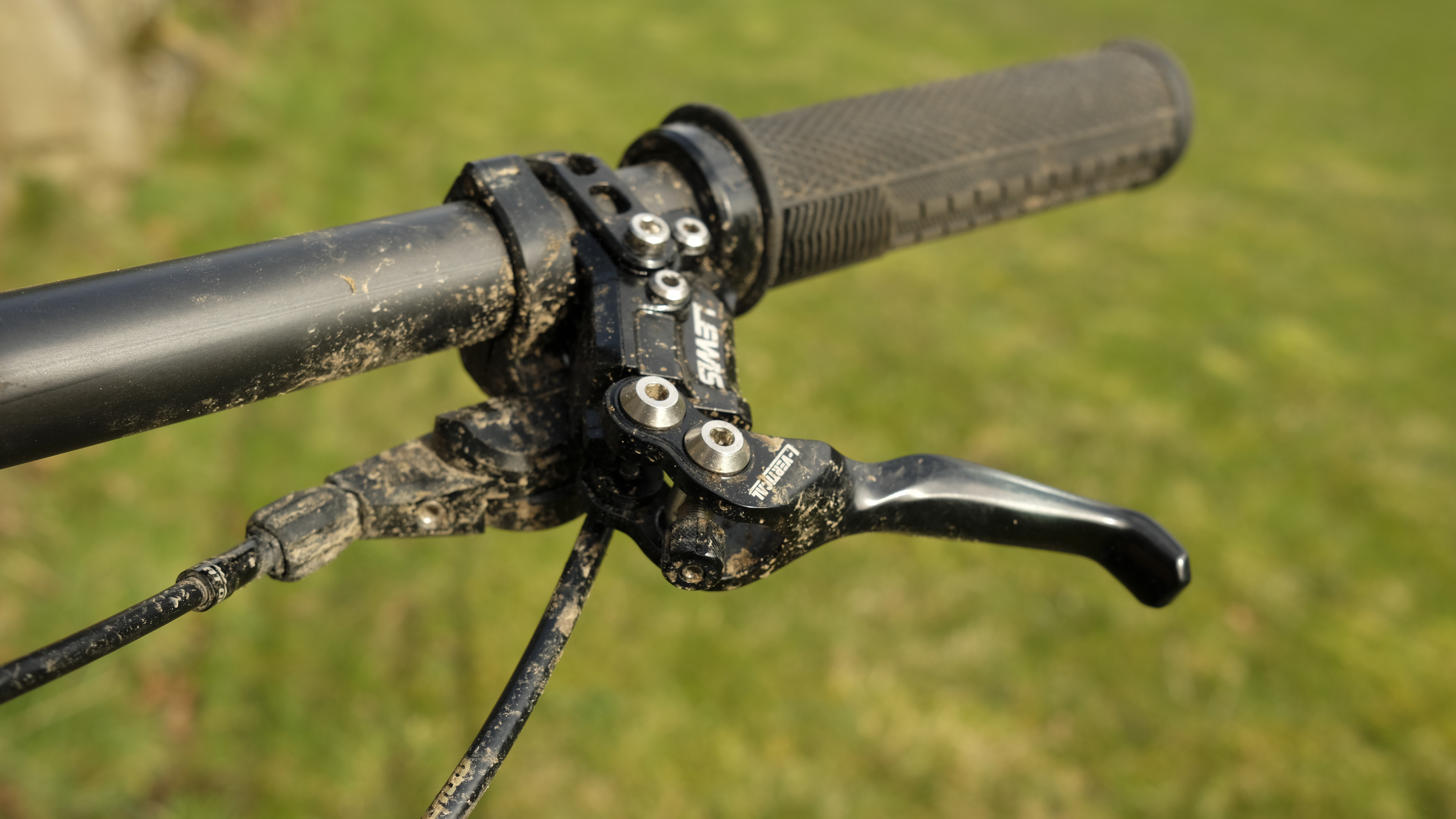
Specifications
Reasons to buy
Reasons to avoid
Lewis a new brake manufacturer that has made a dramatic entrance to the best MTB market. The Chinese brand isn't only making waves due to its brake's familiar aesthetics but the performance and quality have impressed us. Lewis has even made its debut on the World Cup circuit, with its LHT Ultimate brake being ridden by the Intense Team during the 2024 season opener at Fort William.
Don't let the single-piston caliper and cross-country intentions fool you, the Lewis LV2 is a very powerful brake. Guy Kesteven put them to the test and found they not only delivered enough power to meet their XC/trail remit but had enough stopping power to be comfortable taking on light enduro duties too.
The lever is CNC'ed from 7075 aerospace-grade aluminum alloy to keep flex to a minimum for a sharp feel and Lewis has specced four bearings for a light lever feel. Both reach and bite point are independently adjustable to tune in the lever feel. The calipers are also CNC'ed, featuring 21mm pistons, and stocked with metallic pads out of the box.
If you need more power Lewis does a four-piston LV4 or you can opt for the enduro and downhill-focused Lewis LH4 which features a more powerful axial lever with a longer lever blade for a more aggressive leverage ratio.
Pricing is also excellent for the power although availability may be limited depending on your location. For more details check out Guy's full review of the Lewis LV2 brake set.
9. Best for reliability

Shimano Zee
Specifications
Reasons to buy
Reasons to avoid
Shimano’s Zee brake appeared years ago but this Japanese equivalent of SRAM’s Guide RE is still one of the best options if you need siege engine power for a decent price.
Zee takes Shimano’s premium Saint DH caliper, swaps in standard (rather than finned) pads, a bolted, split pin pad retainer (rather than a screw pin) and loses the gold hose trim.
The rebadged SLX lever means reach adjust is tooled not dialed, but still gets Servo Wave power assistance and dodges ‘Free Stroke’ issues found on other brakes. The result is eye-straining power (just 1 percent behind Magura MT5 on the dyno) delivered with utterly reliable repetition in all conditions.
Blunt power application definitely needs some adjusting if you want to stay the right side of the bars and modulation is adequate rather than amazing, but this big bike/big hill stalwart is overlooked way too often.
10. Best budget option
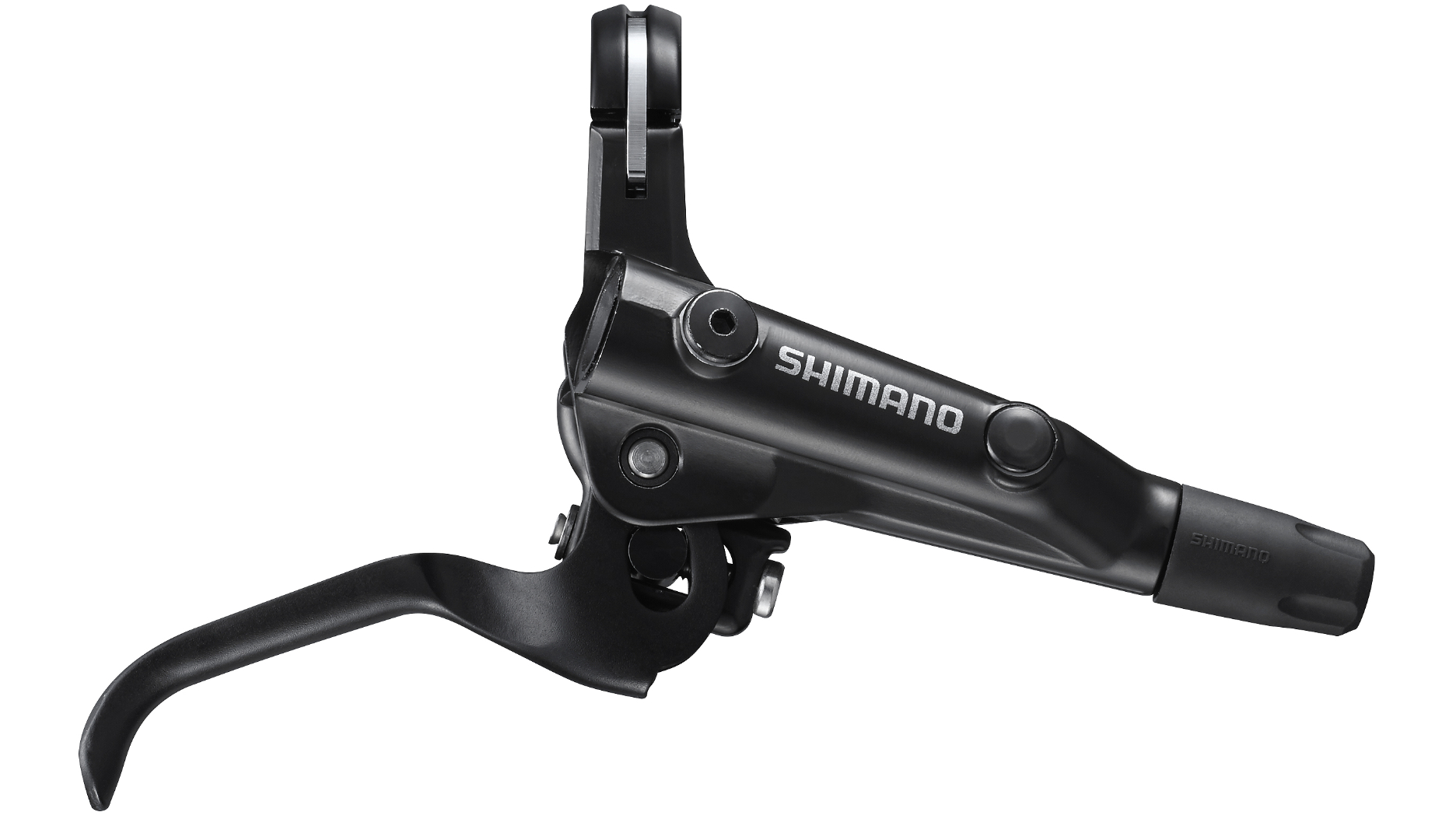
Shimano Deore M6100
Specifications
Reasons to buy
Reasons to avoid
Shimano makes utterly trustworthy, seemingly indestructible and very affordable kit very well and the latest Deore M6100 brake (and the M6000 before it) is the absolute epitome of that.
You don’t get an external knob to adjust reach (just use an Allen key), there’s no largely ineffective ‘Free Stroke’ adjustment, the pads are held in with a split pin, not a screw peg and they don’t have heat-shedding 'Stegosaurus' fins.
You do get Shimano's Servo Wave technology, filtered down from higher brake tiers, which alters pad movement and increase power. That means Deore has a significantly better feel than anything cheaper, flawless lever pull consistency (not a Shimano strongpoint recently) and relentless reliability.
It bites better in filthy weather with aftermarket sintered pads too, although beware using them with softer, cheaper Shimano rotors.
How to choose the best mountain bike brakes
- Two-piston or four-piston? - Two-piston (two-pot) calipers are favored by XC riders and are generally lighter weight, although they have less power and modulation than four-piston brakes. Larger four-piston (four-pot) brakes are more powerful and have better modulation, meaning they are preferred by gravity-focused downhill, enduro, and aggressive trail riders.
- Lever adjustability - Some brake levers will feature adjustability to fine-tune the brake feel. Bite point changes the amount you have to pull the lever to brake while reach adjustment moves the lever position to accommodate different size hands.
- DOT or mineral oil? - Brakes will use either DOT fluid or mineral oil. Both work well and have their own advantages. DOT should give better reliability from contaminants and have a higher boiling point, although it's corrosive. Mineral isn't corrosive which makes it easier to work with and more popular with home mechanics, although it's more expensive and not as readily available.
- Rotor size - Rotor size has a direct effect on brake power and lever feel of a brake. Larger rotors increase braking power and have better heat dissipation, whereas smaller rotors resist warping and offer lower weight.
- Brake pads - Different pad materials change the performance of a brake. Organic pads are quieter and give a great brake feel. They can't match metallic (sintered) pads for all-out power, heat management, or wet weather durability though. However, a bit more attention is needed when bedding in metallic pads and they need to be ridden hard to get the best from them. Resin pads combine organic material with metal compounds to offer a halfway house in performance and durability.
- Gear shifter compatibility - If you use a SRAM or Shimano groupset you can opt to clean up your handlebars by choosing a compatible brake lever and gear shifter combo. Not only do SRAM's Matchmaker X (MMX) and Shimano I-Spec B, II, and EV give a cleaner cockpit by integrating the brake lever and shifter clamp, but they also offer more adjustability to position your shifter in the perfect place
Best mountain bike brakes FAQs
Should I buy budget MTB brakes?
If you’re just looking to replace cable-operated disc brakes or find cheap hydraulics for minimum cost, then Shimano is the answer. Not only are they ridiculously cheap for a pair of fully hydraulic brakes but they’re one of the few sets that don’t feel spongy or numbly wooden at the lever.
Deore will never hit DH (downhill) level deceleration but on the basis of each 20mm bigger you go on the rotor adding an extra 20 percent of power, you can certainly get them to the trail-taming point by upsizing your discs. Just make sure your frame and forks are big disc compatible too.
Which is best for MTB – hydraulic or cable pull MTB brakes?
All the brakes featured here have hydraulic systems as this type of brake offers superior stopping power over cabled systems. Cabled disc brakes are rare on all but the cheapest mountain bikes these days and should be avoided if possible, or upgraded to hydraulic brakes when you can.
Being a simpler system, cable actuated disc brakes are arguably easier to work on than hydraulic versions, but with the right kit, bleeding hydraulic brakes is not too complicated these days. If you're unsure though, take them to your local bike shop for servicing.
Which MTB brakes are best for cross-country?
SRAM Level four-pot brakes are considerably more powerful than most other two-pot brakes and are still very light, although equally expensive. If you don't need loads of power you could alternatively opt for the Hope XCR and save a decent amount of weight.
What should I look for in enduro, bike park and trail brakes?
If the Alps or at least the local downhill trails/bike park are a regular riding destination, then power and top-to-bottom control obviously trump weight saving. There are plenty of different options to suit different feel/performance preferences too.
The most powerful brakes we’ve tested on a dyno are Magura’s four pots, with the MT4 offering the most cost-effective package. The mix of hard hydraulic bite but flexy lever feel from the plastic construction won’t suit everyone though and we’ve always had variable reliability from test sets.
Fractionally behind on power but still eyeball-straining and utterly reliable, with a feel that riders like at a bargain price, are Shimano’s Zee brakes.
If you want to say you use the same brakes as Aaron Gwin and never weigh your bike then TRP’s big DH-R Evos are worth a look. Hayes' new Dominion T4 gives a more sensitive, lighter feel and some neat touches like sideways caliper adjustment. Prices are high though, and pads and accessories might be hard to find in an emergency.
If having brilliant backup is what you’re after then nobody beats Hope, who has a van at practically every UK event and will bend over backwards to help if you have an issue. Distinctive Lancashire machine-carved looks, relentless reliability, easy lever adjustment, and the ability to get pretty colors guarantee a very loyal following too.
How we test mountain bike brakes
All the brakes listed here have been fully tested enabling us to find out what they do well and less well (the models without reviews have been reviewed by us in the past when working for other media outlets).
All review samples are independently weighed, inspected, and set up by our testers to verify the manufacturer's product claims and determine each brake's fitment, compatibility, and adjustability.
After installing the brakes, we subject them to months of harsh treatment in a range of temperatures from freezing to sweltering to check they can do the job in all conditions. The brakes also get pelted by rain, mud, dust, grit, gravel, and more over long descents so we can truly measure their performance and be sure they are fit for purpose.
Meet the testers

Guy's been riding and writing about mountain bikes for over 20 years and has tested just about every MTB brake that's ever existed. He's a man who doesn't hold back with his honest assessments, so you can trust you're getting the very best impartial MTB brake advice there is.
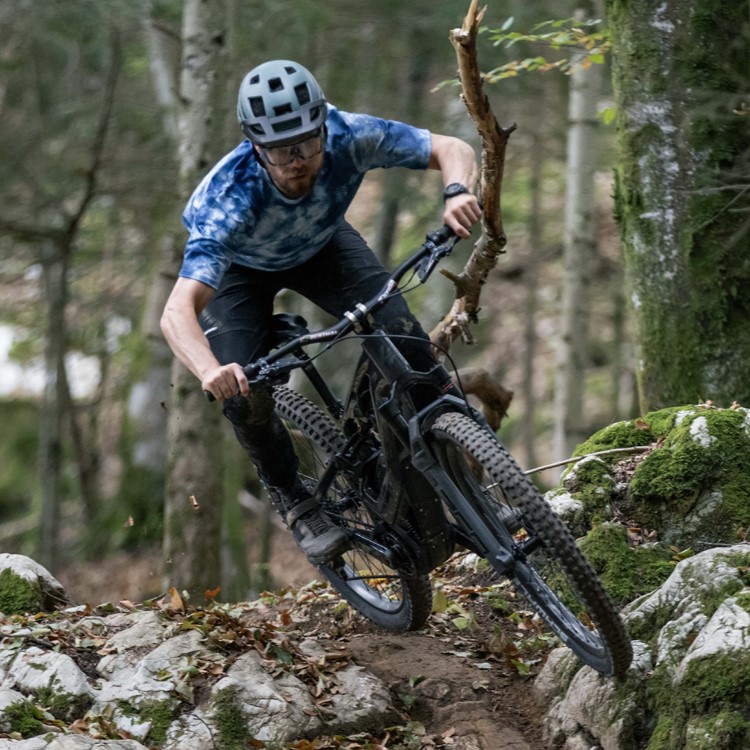
Graham has almost 20 years of riding experience, he has dabbled in downhill, enduro, and gravel racing and ridden a vast array of brakes in that time.
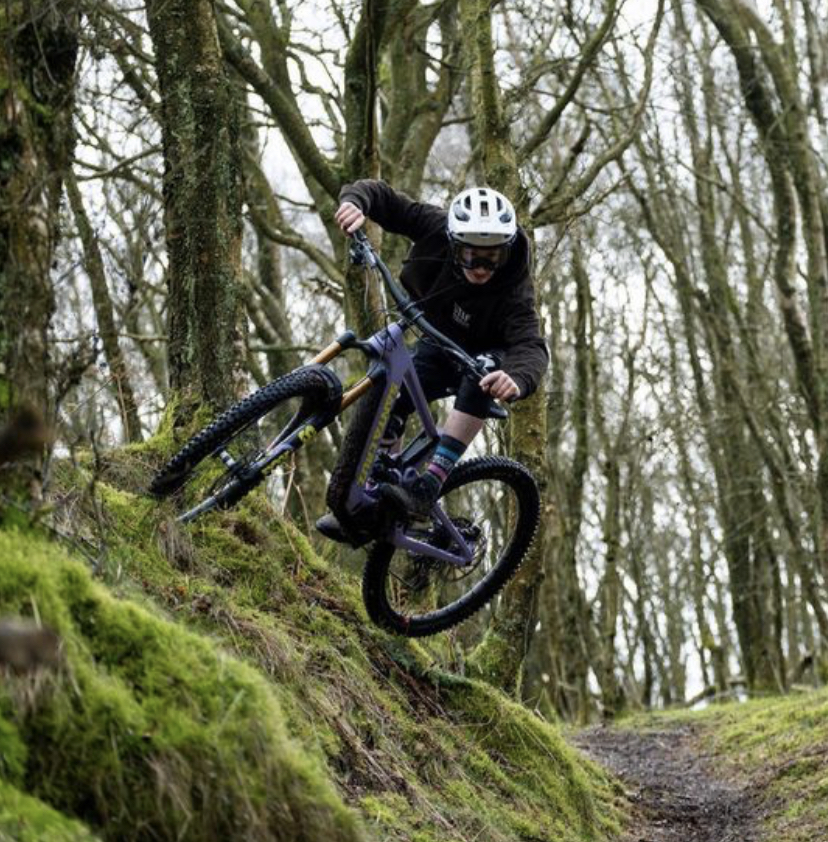
Jim Bland is a product tester and World Cup downhill mechanic based in North Yorkshire, England, but working worldwide. He's not only ridden a wide range of brakes, he's disassembled and reassembled them too.
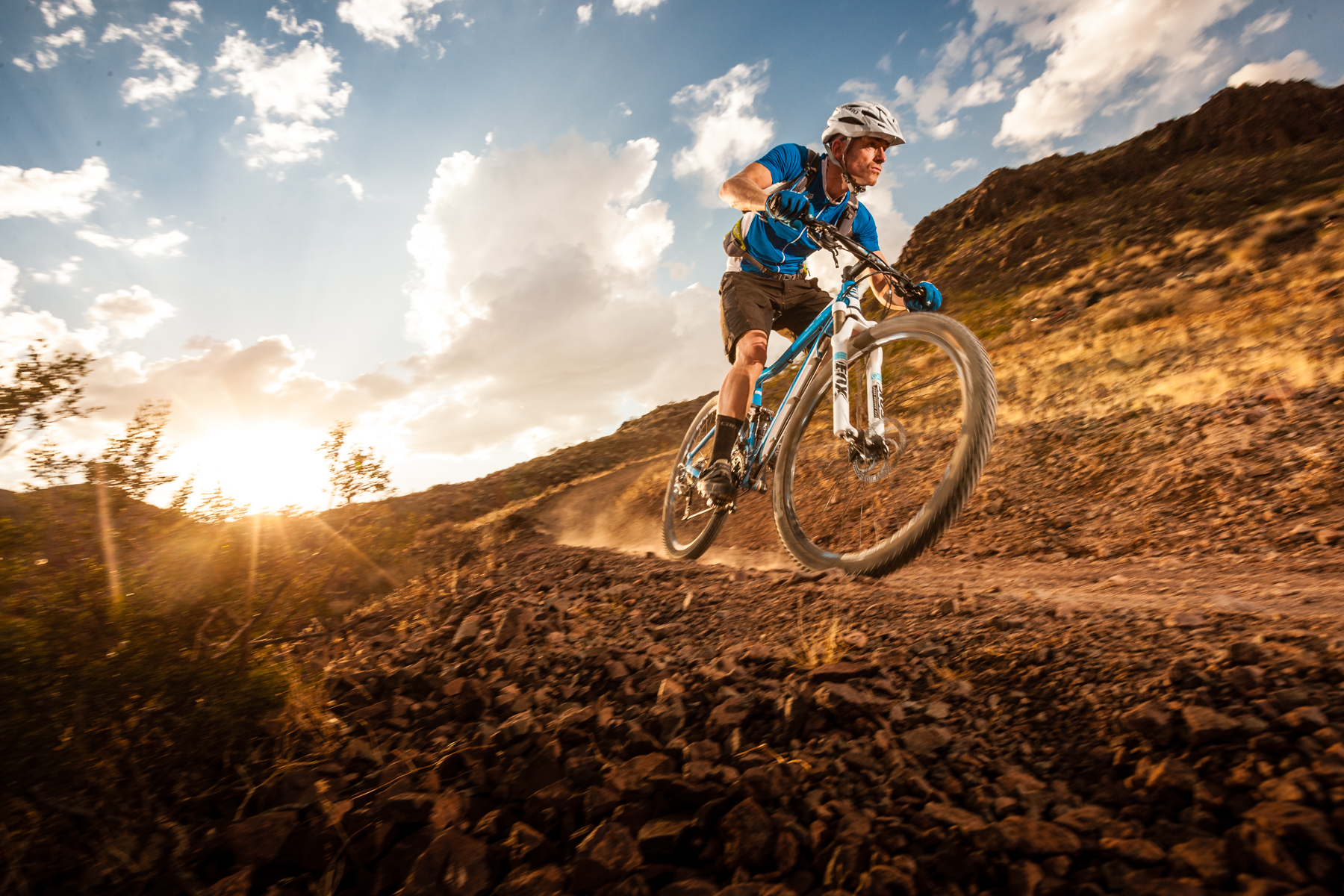
Guy Kesteven has been working on Bike Perfect since its launch in 2019. He started writing and testing for bike mags in 1996. Since then he’s written several million words about several thousand test bikes and a ridiculous amount of riding gear. He’s also penned a handful of bike-related books and he reviews MTBs over on YouTube.
Current rides: Cervelo ZFS-5, Specialized Chisel, custom Nicolai enduro tandem, Landescape/Swallow custom gravel tandem
Height: 180cm
Weight: 69kg
- Jim BlandFreelance writer
- Graham CottinghamSenior reviews writer, Bike Perfect
